Hobin Ryu
Leveraging Future Relationship Reasoning for Vehicle Trajectory Prediction
May 24, 2023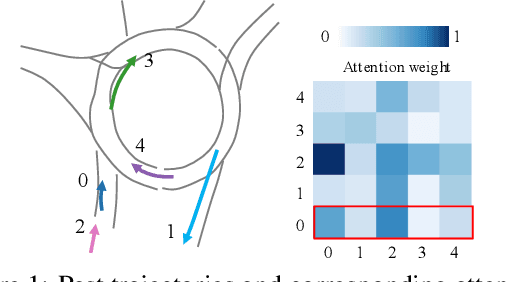
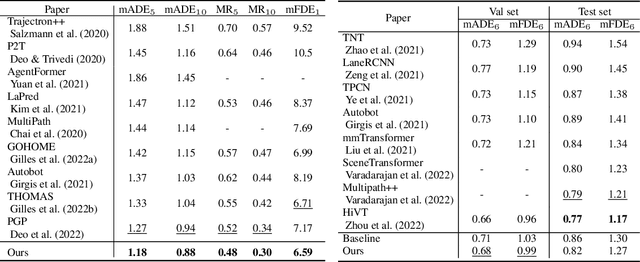

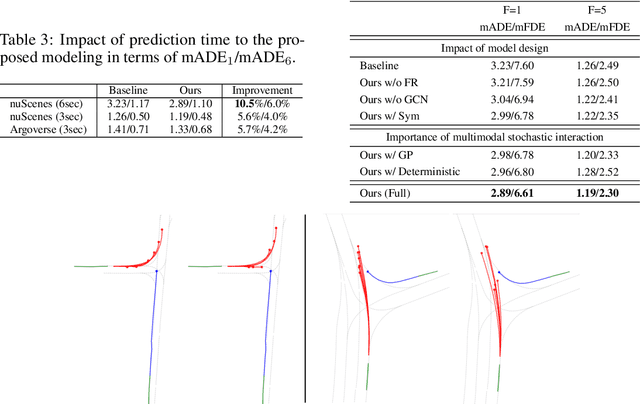
Abstract:Understanding the interaction between multiple agents is crucial for realistic vehicle trajectory prediction. Existing methods have attempted to infer the interaction from the observed past trajectories of agents using pooling, attention, or graph-based methods, which rely on a deterministic approach. However, these methods can fail under complex road structures, as they cannot predict various interactions that may occur in the future. In this paper, we propose a novel approach that uses lane information to predict a stochastic future relationship among agents. To obtain a coarse future motion of agents, our method first predicts the probability of lane-level waypoint occupancy of vehicles. We then utilize the temporal probability of passing adjacent lanes for each agent pair, assuming that agents passing adjacent lanes will highly interact. We also model the interaction using a probabilistic distribution, which allows for multiple possible future interactions. The distribution is learned from the posterior distribution of interaction obtained from ground truth future trajectories. We validate our method on popular trajectory prediction datasets: nuScenes and Argoverse. The results show that the proposed method brings remarkable performance gain in prediction accuracy, and achieves state-of-the-art performance in long-term prediction benchmark dataset.
Semantic Grouping Network for Video Captioning
Feb 03, 2021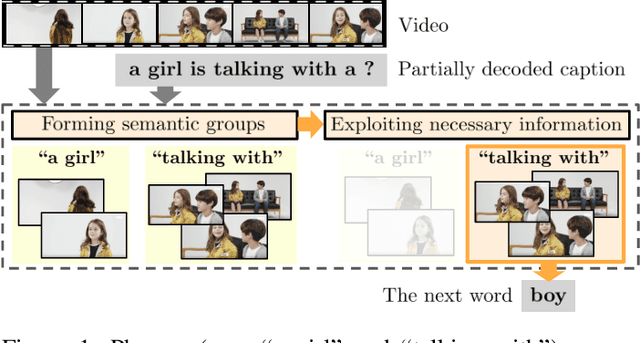
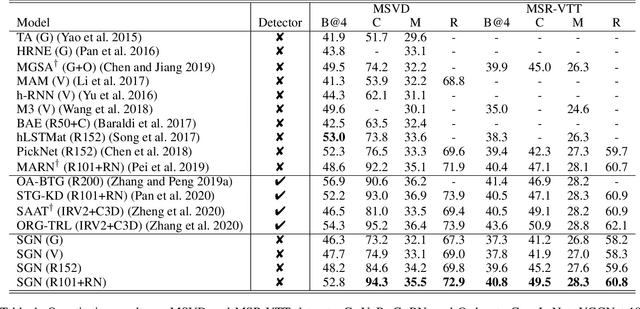

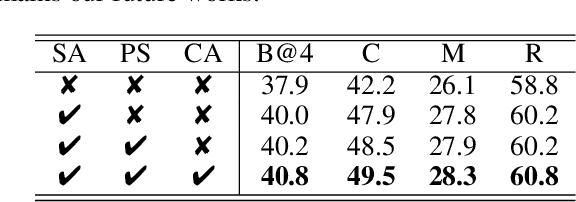
Abstract:This paper considers a video caption generating network referred to as Semantic Grouping Network (SGN) that attempts (1) to group video frames with discriminating word phrases of partially decoded caption and then (2) to decode those semantically aligned groups in predicting the next word. As consecutive frames are not likely to provide unique information, prior methods have focused on discarding or merging repetitive information based only on the input video. The SGN learns an algorithm to capture the most discriminating word phrases of the partially decoded caption and a mapping that associates each phrase to the relevant video frames - establishing this mapping allows semantically related frames to be clustered, which reduces redundancy. In contrast to the prior methods, the continuous feedback from decoded words enables the SGN to dynamically update the video representation that adapts to the partially decoded caption. Furthermore, a contrastive attention loss is proposed to facilitate accurate alignment between a word phrase and video frames without manual annotations. The SGN achieves state-of-the-art performances by outperforming runner-up methods by a margin of 2.1%p and 2.4%p in a CIDEr-D score on MSVD and MSR-VTT datasets, respectively. Extensive experiments demonstrate the effectiveness and interpretability of the SGN.
 Add to Chrome
Add to Chrome Add to Firefox
Add to Firefox Add to Edge
Add to Edge